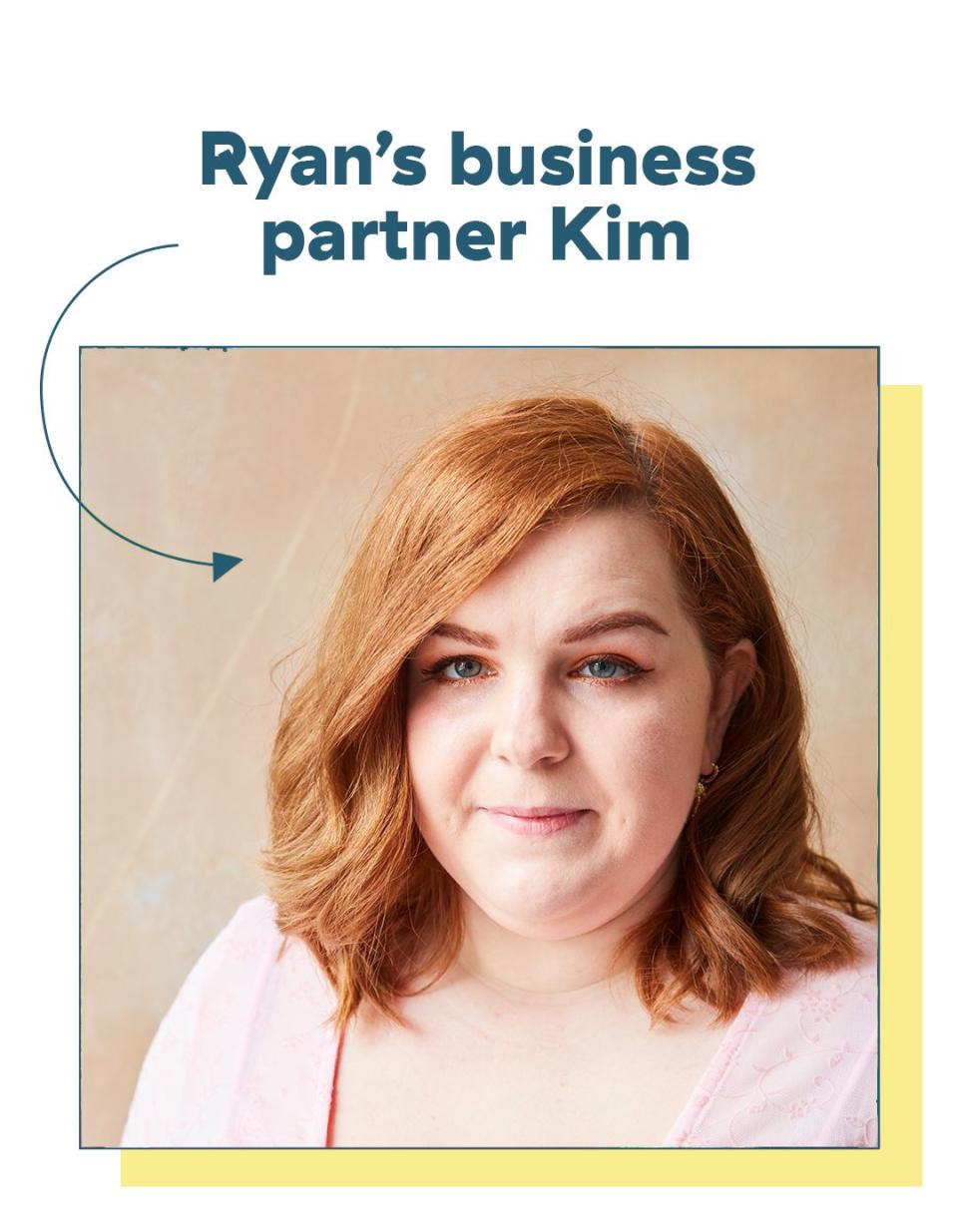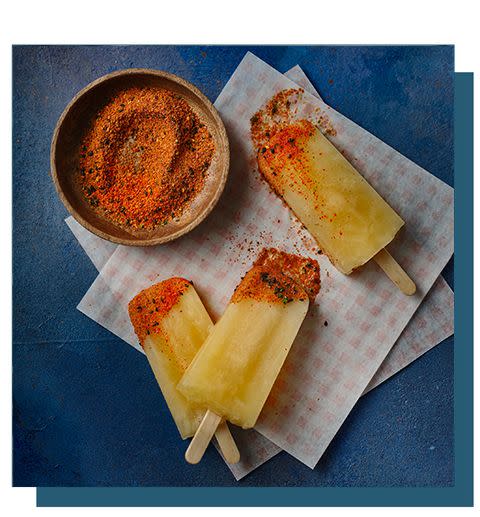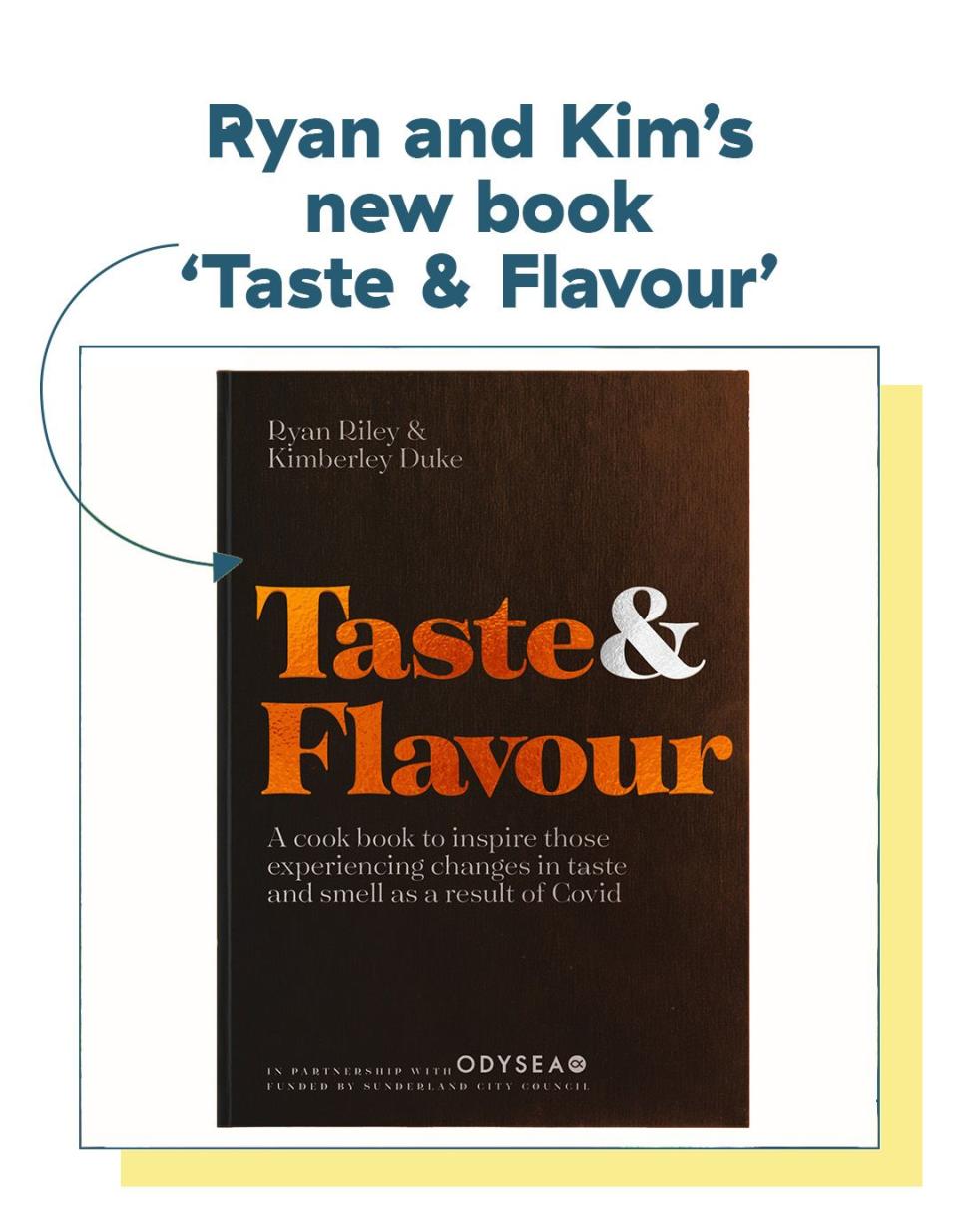“Losing Your Taste Through Cancer Or COVID Shouldn't Affect Your Enjoyment Of Food”

It’s a busy time for Ryan Riley, co-founder of Life Kitchen. When I ring him, he’s in the back of a cab on his way to Television Studios – the home of ITV.
Between interviews on Canadian breakfast TV, radio shows, magazine pieces and a casual slot on ‘Lorraine’, Ryan’s barely got time to think. He’s officially the most wanted person in food writing – because he and his business partner Kimberley Duke just released the first-ever cookbook for people suffering from Covid.

“I’ve spent years working in this field and doing some really cool stuff, but this has been the biggest initial global reaction we’ve ever had,” he muses as he zooms through central London.
He’s right: Ryan and Kimberley’s accomplishments as ‘Life Kitchen’ go well beyond their current, well-deserved place on the hot-topics list. Founded as a not-for-profit cookery school over four years ago, Life Kitchen started out as a way to teach people with an altered sense of taste from cancer treatment how to enjoy food again.
“Our mental health is so damaged by not eating and not tasting,” explains Ryan. “If you haven’t been enjoying food, connecting yourself back to food in some way is a really important step in getting excited by eating again.” For Ryan and Kim, that’s what Life Kitchen is all about: finding ways to make people enjoy the process of sitting around the table and eating with their families again.
Both Ryan and Kimberley lost a parent to cancer when they were young adults living in the North East of England. Ryan’s mother was diagnosed with stage four lung cancer when he was 18. Being the family member home most often, Ryan took on many of the domestic tasks involved with looking after his mum. “I was the one who was closest to her,” he explains. “My dad was at work and my sisters were at university, so I was the one who was always around everything.” Ryan’s mother sadly passed away when he was 20.
After coming into some money at a casino aged 24, Ryan moved to London and started working in magazines while Kim started professional training as a chef. It was here, fuelled by his first experiences working in magazines and TV, that he started to wonder how he could use his and his mother’s experiences with cancer treatment in order to help others.

“All good things in my life came out of a drunken idea,” he smiles as he recollects his casino winnings – and Life Kitchen was no different. “Working in media, I started to think what I could do about our experiences to help others. I drunkenly told Kim one night that I’d love to do one cookery class – and here we are four years later.”
Life Kitchen’s philosophy is simple: ramping up the elements of flavour and the sensations of eating that you do still experience when you’re affected by either chemo- or Covid-induced changes to the palate.
“You have five taste receptors,” explains Ryan. “Sweet, sour, salty, bitter and umami.”
It’s this last one that people understand the least about – and the one that’s most powerful in stimulating your tastebuds when your palate is dulled by chemotherapy. Ryan describes umami as that savoury, rich, base flavour in lots of cooking: onions and garlic, Marmite, soy, cheese and even milder examples like potatoes, celery and beyond.
“What we do is we try to really push that umami base in every recipe. If you’re at home and you struggle with flavour, add umami in every way you can. Add a spoon of Marmite or a bit of soy sauce or miso,” he suggests. In fact, you’re probably already doing it and not realising, according to Ryan. “You put parmesan on your pasta or soy sauce in your stir fry. All of these are ways of adding extra base flavour. Once you get the base flavours, it triggers the rest of your taste receptors more easily.”
Since the very beginning of Life Kitchen, Ryan and Kim have worked with Professor Barry Smith from the Centre for the Study of the Senses to make sure all of their classes, recipes and advice is backed up by solid, scientific evidence around taste loss. The recipes use five elements proven to heighten, replicate or synthesise the sensation of taste: aroma, umami, texture, layering and triggering the trigeminal nerve.

“I think the trigeminal nerve is one that always gets people,” explains Ryan. Responsible for sensation in the face and motor functions such as biting and chewing, the trigeminal nerve represents the more physical, bodily reactions we have to some of the things we eat. It’s what burns when you have mustard or wasabi; that cooling feeling in the bridge of your nose when you eat lots of mint or too much toothpaste; the eye-watering sting when horseradish catches you off guard,"
“The reason we use a lot of trigeminal stimulating ingredients is that if you’re not necessarily getting all of the flavour, you can be getting some of the feeling [through sensation], some of the physical connection to the dish,” explains Ryan. “It sounds [pretentious], but if you haven’t been enjoying food, connecting yourself back to food in some way is a really important first step.”
It’s that connection to food that Life Kitchen never wants to stray from. When it comes to his and Kim’s style of recipe writing, for Ryan it’s all about putting a small spin on classics in order to maximise flavour without making them too unfamiliar. “The worst thing you can have when you’re ill is not really wanting to eat something familiar [that used to provide comfort] or feeling alienated by what you’re eating,” he says.
Take their lasagne from book one for example: it looks like a lasagne, with all of the components of a lasagne, but everything about it is designed to trigger your senses of smell, taste and texture. “It’s got this cardamom bechamel, beautiful curried flavours in the sauce, and it’s really well thought-out, but you’d still really recognise it as a lasagne.
“We wanted to focus on those classics while incorporating just a few new elements,” explains Ryan. “We’ve been very careful to do the same thing with the new book, too. There are lots of familiar aspects, but with interesting takes in there as well.”
When the first research around Covid and taste was released, Ryan and Kim knew that they should be doing what they can to use their existing experience to help people. Funnily enough, their ongoing colleague Professor Barry Smith was one of the key voices in one of the world’s first research papers on Covid taste loss – and so it seemed perfect.
“When he came to me with all of the results, asking if we were interested, I was like, absolutely!” But Ryan and Kim’s existing arsenal of recipes and knowledge wouldn’t be as beneficial as they thought.
“We were naïvely like, ‘This will be just like Life Kitchen.’ Actually, it’s the exact opposite. Covid [taste loss] is a totally different bag altogether.”
As it stands, taste changes related to Covid currently break down into three categories: those who lose their taste for a couple of weeks while they’re ill, those who lose their smell for a long period of time (called anosmia), and those who have a distorted sense of smell potentially for quite a long time (parosmia).
“That’s where it got really interesting,” muses Ryan.
“People who have parosmia find things like onions, garlic, meats, eggs and nuts really repulsive. Almost as if they’re decaying oy something when they eat them.” This proved an issue for Ryan and Kim. Savoury bases like onions, garlic and meat formed the base of so many of their recipes in the first book.
“It was completely different to what we initially thought it would be,” he explains. When writing Taste & Flavour, the duo completed over 300 recipes tests – all of which were whittled down to the 18 in the book.

Taste & Flavour focuses on what Ryan calls “safe foods” - foods that don’t trigger that strong, repulsive reaction to those with parosmia. “Things like potatoes, pasta, bread. All real safe, but kind of boring, foods.” To those, they added Life Kitchen’s trademark principles: “umami, citrus, chilli, ways to add flavour. All of the things that we’ve become known for.”
Ryan and Kim first began working on the book in November 2020, thanks to Professor Barry Smith’s early research. The paper was only officially released in January – and Taste & Flavour came out only two months later in March 2021. “It was the quickest turnaround – it’s been one hell of a process,” he laughs. “Lots of people in the industry have told us that this is kind of our best book because it’s been a whole process of evolution and we’ve learnt so much.”
But their learning and willingness to adapt has paid off – and the world is listening. Taste & Flavour is currently trending in Canada, Brazil, Germany, and beyond – plus, it’s being translated into Portuguese for South America.
Accessibility has always been at the core of Ryan and Kim’s operation. Regardless of how big Life Kitchen gets, cooking classes and Taste & Flavour digital downloads will always remain free, Ryan reassures me. “Accessibility has to be key to our mission,” he says.
“When my mother was ill, my father lost his job because he was taking her to so many hospital appointments. We had no money. When Kim was younger, she was lucky if she had 20p for lunch at school. That sort of thing stays with you.
“[The cost of making Life Kitchen is great,] but we make it free because that’s exactly what it should be. The things that are necessary should be free – especially resources and information.”
And in an age where excessive information becomes exhausting, Life Kitchen stands out. “I think the reason it has blown up so much is not necessarily whether people get something out of the book or not, it’s just the fact that someone’s doing something, someone cares,” Ryan says.
“I think that can often be the thing that makes you feel less alone.” Thinking about his cookery class guests, Ryan believes that the fact there was a cooking class catering specifically for their own needs and struggles often meant more to them than whether they might taste what they created or not.
“I guess that’s the reason that Life Kitchen works: that it’s barely about cancer or Covid at all,” he says. It’s about being social, and that’s always the core of who we are as people, and what we’re always trying to promote. Getting people back around the table, uniting people together, that’s always my ultimate goal. Over anything.”
Taste & Flavour is available to download for free.
Like this article? Sign up to our newsletter to get more articles like this delivered straight to your inbox.


